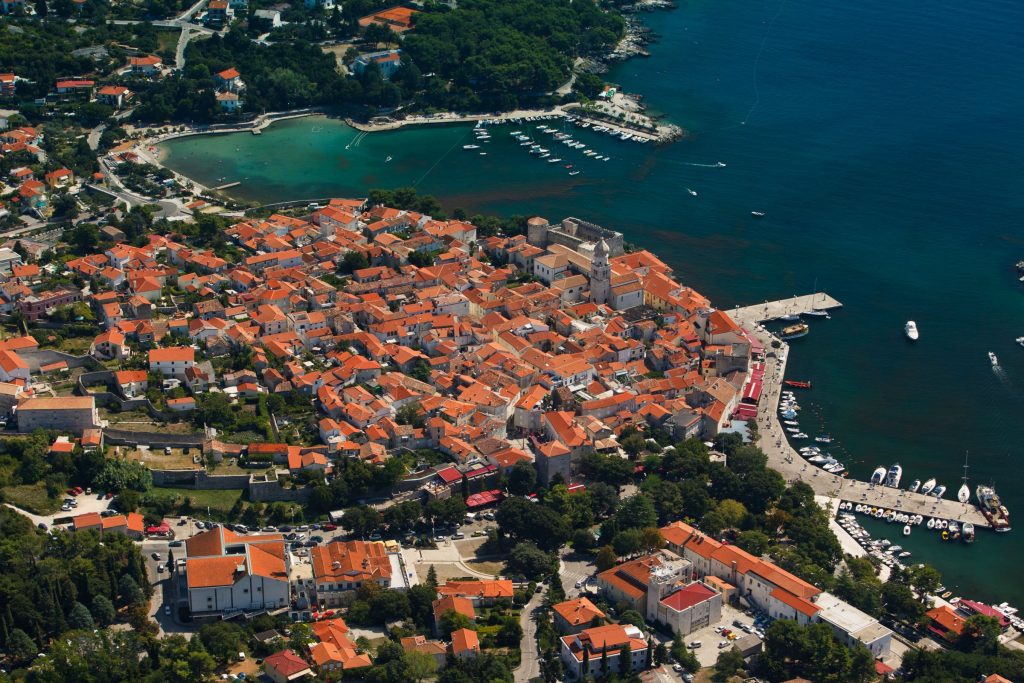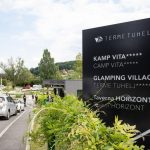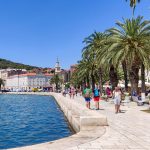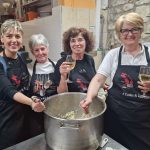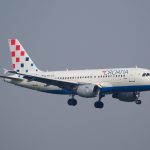As Morski writes, the Sunce Association organised another study trip as part of the project entitled “For Plastic-Free Croatian Islands”. This time, the employees of the Sunce Association, along with their project partners, visited the island with the least plastic, Zlarin island, and the island with the highest percentage of waste separation in all of Croatia, Krk.
The first day of the trip was a visit to Zlarin island, which launched the initiative to reduce plastic waste on that particular island four years ago.
”Through the initiative For Zlarin island without plastic, significant progress has been made in reducing pollution as a result of disposable plastic. The project was initially supported by the Tourist Board and the local mayor, and then slowly began to involve local traders, fishermen and other locals,” said Katarina Gregov, a representative of the Zlarin Tourist Board.
The mere fact that there are no cars on Zlarin island is a sufficient motivator for the local community to continue striving to develop the concept of sustainable tourism by which visitors have the opportunity to experience the island as it always has been throughout time.
”Our goal is to make people aware of being more responsible consumers and not replacing one type of waste with another. In the beginning, of course, it wasn’t easy, it’s difficult to change people’s already well established habits and patterns of behaviour. However, when you provide them with some education, and at the same time an acceptable and affordable alternative to disposable plastic, most of them eventually agree to it,” said Katarina.
Krk – the island with the highest percentage of separated waste in all of Croatia
The second and third day of the trip saw the aforementioned Association head to the beautiful island of Krk, the most populated and economically developed island in the country, and also one of the Croatian leaders in the share of separation of useful raw materials from waste.
For many years, Krk has been implementing a system of a circular economy, which doesn’t discard raw materials, but instead uses them for re-production. This reduces the consumption of limited natural resources (oil, wood, iron) and, consequently, waste.
Waste is collected door to door, and Krk’s residents have bins in front of their houses in order to separate plastic, glass, paper, biowaste and mixed municipal waste themselves. However, the door-to-door waste collection system wasn’t introduced in the old town due to the mayor’s decision not to have bins located there, nor air conditioning, clotheslines, etc. That means that waste from the old town is collected outside the of the walls in special locations.
A large amount of separately-collected recyclable waste comes mixed, so this waste is first taken to a sorting plant where it’s further sorted, baled and handed over for further recovery. Additional waste sorting is important when it comes to separating waste that doesn’t belong there. In addition, waste sorting plants are important for the future self-financing of utility companies because they further reduce the cost of waste collection.
Krk is also proud of its modernly equipped composting plant, in which about six million kuna was invested two years ago for the modernisation of the plant. The space of the once open composting plant, after the investment, was covered and closed, and a device for machining the imported biowaste was installed in it. Produced compost is 1st class compost used for agricultural purposes, and users of Ponikve Krk’s services receive one bag of that compost as a gift, while larger quantities are sold at a very affordable price and brought to the doorstep. Ponikve Krk also plans to produce third class compost from sludge from wastewater in the amount of 676 tonnes of compost per year.
For more, make sure to check out our dedicated lifestyle section.

